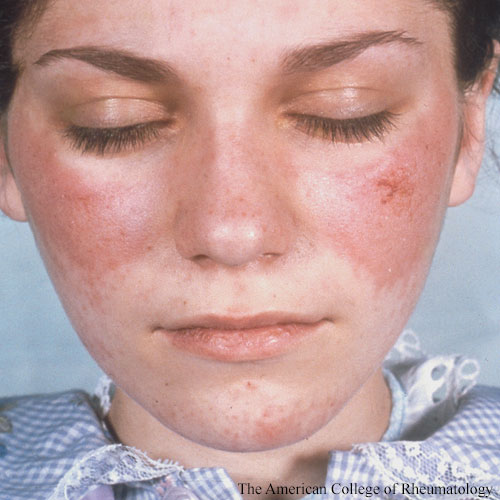 We know chemical exposure can affect patient health, but pinpointing this effect in individual rheumatology patients has proved largely elusive.
We know chemical exposure can affect patient health, but pinpointing this effect in individual rheumatology patients has proved largely elusive.
Cristina M. Lanata, MD, an assistant professor of rheumatology at the University of California San Francisco, is using liquid chromatography-quadrupole time-of-flight mass spectrometry (LC-QTOF/MS) to interrogate the bloodstream of test subjects with systemic lupus erythematosus (SLE) compared with healthy patients. The goal is to uncover if specific chemicals exist in patients with SLE compared with healthy controls and to determine if chemicals are associated with DNA methylation abnormalities.
Methylation is an epigenetic mechanism used by cells to control gene expression that has proved susceptible to chemical exposure, such as in patients who smoke.
Previous research has demonstrated dysregulated DNA methylation in patients with SLE. However, research linking specific chemical exposure to SLE patients has been mostly limited to retrospective studies.1,2
“We wanted to understand, from an epigenetic perspective, why these changes are happening to see exactly how gene expression may be impacted by a wide variety of different environmental organic chemicals,” Dr. Lanata says.
She explains that LC-QTOF/MS, recently used in epidemiology, is a novel and powerful methodology for this study because it enables examination of a very extensive list of environmental organic chemicals (EOCs) a patient may have been exposed to over time in a nontargeted, unbiased approach. “Instead of searching for one specific EOC, this testing technology allows us to search for around 700 of the most well-known EOCs that are commonly found in our homes, workplaces and even in the medical environment.”
Phthalates: An Early Contender
Although this study designed to test a cohort of 400 SLE patients is just underway, preliminary findings in 99 of these patients, and particularly in patients with SLE and a history of lupus nephritis have uncovered one common elevated chemical family: phthalates.
Phthalate chemicals are used to make plastics stronger and more flexible. They are known to demonstrate biologic behaviors that can cause endocrine disruption and have been linked to lupus nephritis in mice.3,4 Although this study is still in progress and its findings must still be validated, Dr. Lanata and her team find this potential link between phthalate exposure and SLE worth considering in rheumatology care, particularly for patients already suffering from kidney inflammation and related symptoms.
Protect Patients
Phthalates are commonly found in the medical environment, including in IV tubing and other disposable plastics used in patient care. The neonatal setting has already addressed concerns about patient exposure to phthalates. Efforts to reduce phthalate exposure have been based on studies that address environmental exposure to phthalates and neurodevelopmental effects on infants, such as hyper-attention, hyper-reflexia and difficulty being soothed.5
Although she and her colleagues are still trying to understand what their research means for clinical practice, Dr. Lanata believes rheumatologists caring for patients with SLE could consider addressing with patients exposure to environmental chemicals as a means to protect patients already suffering from lupus and its associated symptoms.
She also believes greater awareness should be raised in all medical settings about the presence of phthalates in medical plastics.
“Phthalates are ubiquitous—present in most foods, plastics and also in the healthcare setting. Some medications are even coated in phthalates; so we may be giving phthalates to our patients,” she acknowledges. “Perhaps it would be better not to expose our patients to these chemicals when they are prone to [causing] autoimmune dysregulation.”
As part of her long-term research goals, Dr. Lanata wants to identify significant replicated signatures associated with EOCs and DNA methylation dysregulation to interrogate what people have been exposed to and support preventive care around EOC exposure. “The more we study, the more we understand how these chemicals can [affect] our health. In years to come, this knowledge may lead to eliminating these chemicals from our daily lives,” she says.
Dr. Lanata expects to publish initial findings from this study later this year. She also directs rheumatologists interested in helping their patients avoid phthalates to patient information and current research from her colleagues with UC San Francisco’s Program on Reproductive Health and the Environment.
Carina Stanton is a freelance science writer based in Denver.
References
- Jeffries M, Dozmorov M, Tang Y, et al. Genome-wide DNA methylation patterns in CD4+ T cells from patients with systemic lupus erythematosus. Epigenetics. 2011 May;6(5):593–601.
- Squance ML, Guest M, Reeves G, et al. Exploring lifetime occupational exposure and SLE flare: a patient-focussed pilot study. Lupus Sci Med. 2014 May 16;1(e000023).
- Moreno M. Phthalate exposure and health risks. JAMA Pediatr. 2014 Jan;168(1):96.
- Potera C. Autoimmune disease: Phthalate linked to lupus in mice. Environ Health Perspect. 2005 Dec;113(12):A809.
- Stroustrup A, Bragg JB, Andra SS, et al. Neonatal intensive care unit phthalate exposure and preterm infant neurobehavioral performance. PLoS ONE. 2018 Mar 5:13(3):e0193835.


